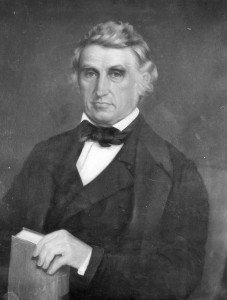 A dramatic and fateful event took place in the American Fur Company’s retail store, located on Mackinac Island, on June 6, 1822. The accidental shot that was thought to have fatally wounded Alexis St. Martin there brought together an inquisitive doctor and a unique patient and made medical history.
A dramatic and fateful event took place in the American Fur Company’s retail store, located on Mackinac Island, on June 6, 1822. The accidental shot that was thought to have fatally wounded Alexis St. Martin there brought together an inquisitive doctor and a unique patient and made medical history.
St. Martin was the test subject for Dr. William Beaumont, Fort Mackinac’s doctor at the time (1820-25). When the wound healed in a unique way, forming a fistula that bonded the torso wall to the stomach, Beaumont started a serious of experiments on human digestion. The living, working stomach was accessible to the doctor and he proceeded to test how food digested through observations, lowering foods into the stomach, and testing the gastric juices in vials outside of the stomach. Almost 250 experiments were conducted starting at Fort Mackinac and continuing in Wisconsin, Washington, D.C., and New York.
The culmination of experiments on St. Martin was the book Experiments and Observations on the Gastric Juice and the Physiology of Digestion. What Beaumont concluded in his 1833 book was digestion in the stomach was a chemical process using gastric juice as one of the agents, it used the temperature and motion to help in the process, and different foods digested differently and in different timing, among many other things.
The scientific impact of Beaumont’s book was great everywhere, but especially in Europe. Doctors were initially skeptical of the findings, soon they were to build on the clarifications the book gave them in the study of digestion. Beaumont, whose training included just over a year of medical school and two years of apprenticeship, became celebrated around the world and is still held in high esteem today as one of the first American doctors to have a significant impact on medical research.









